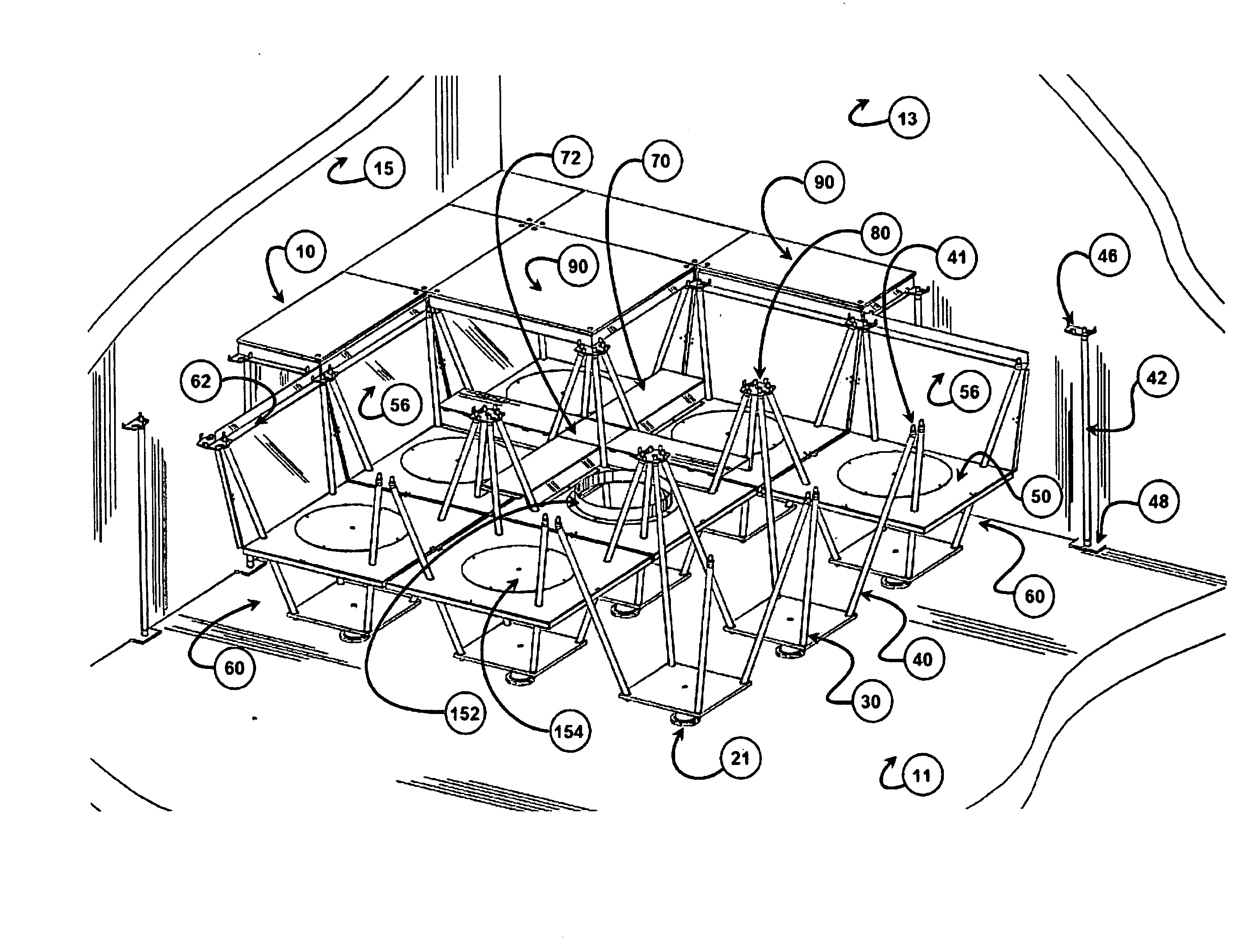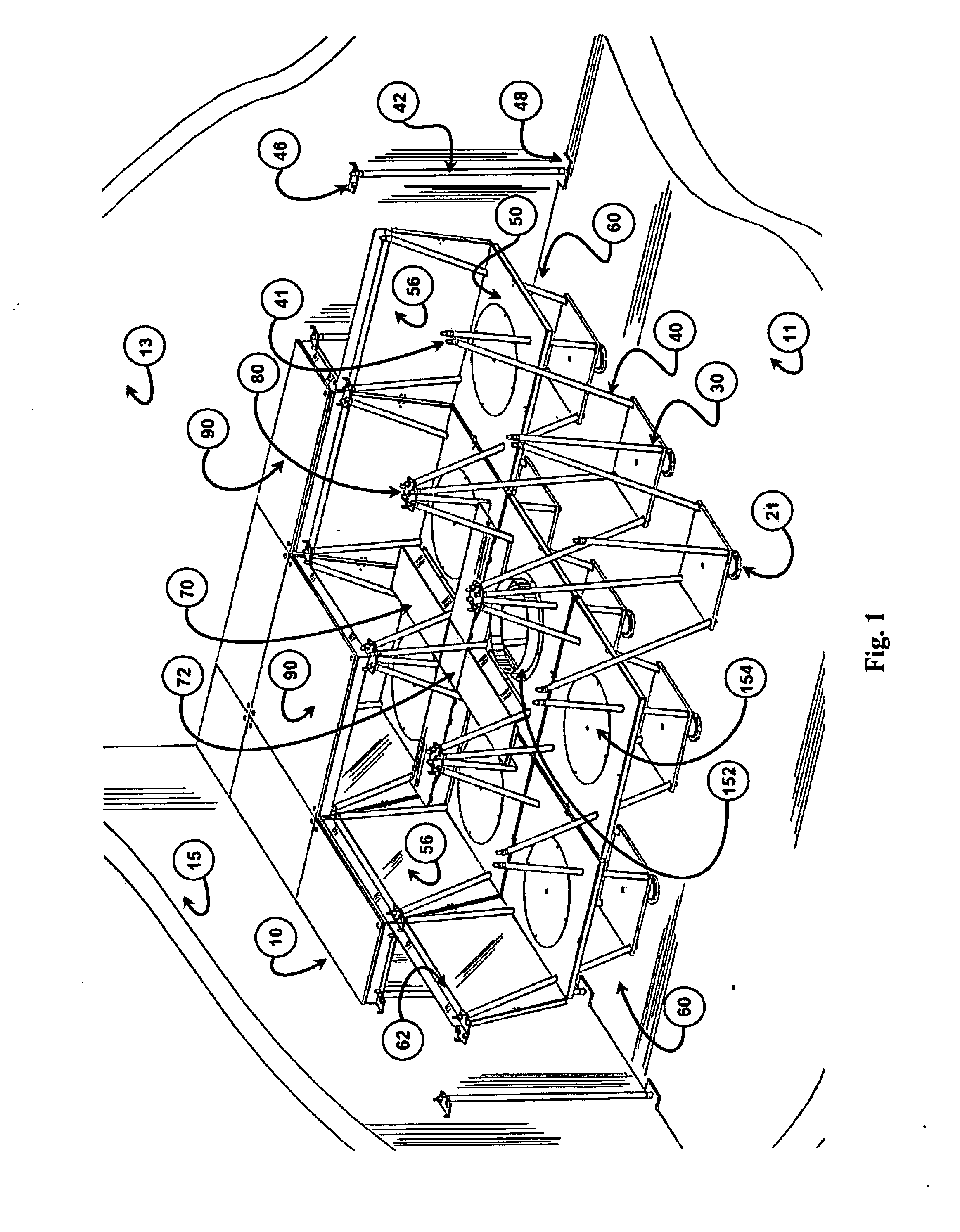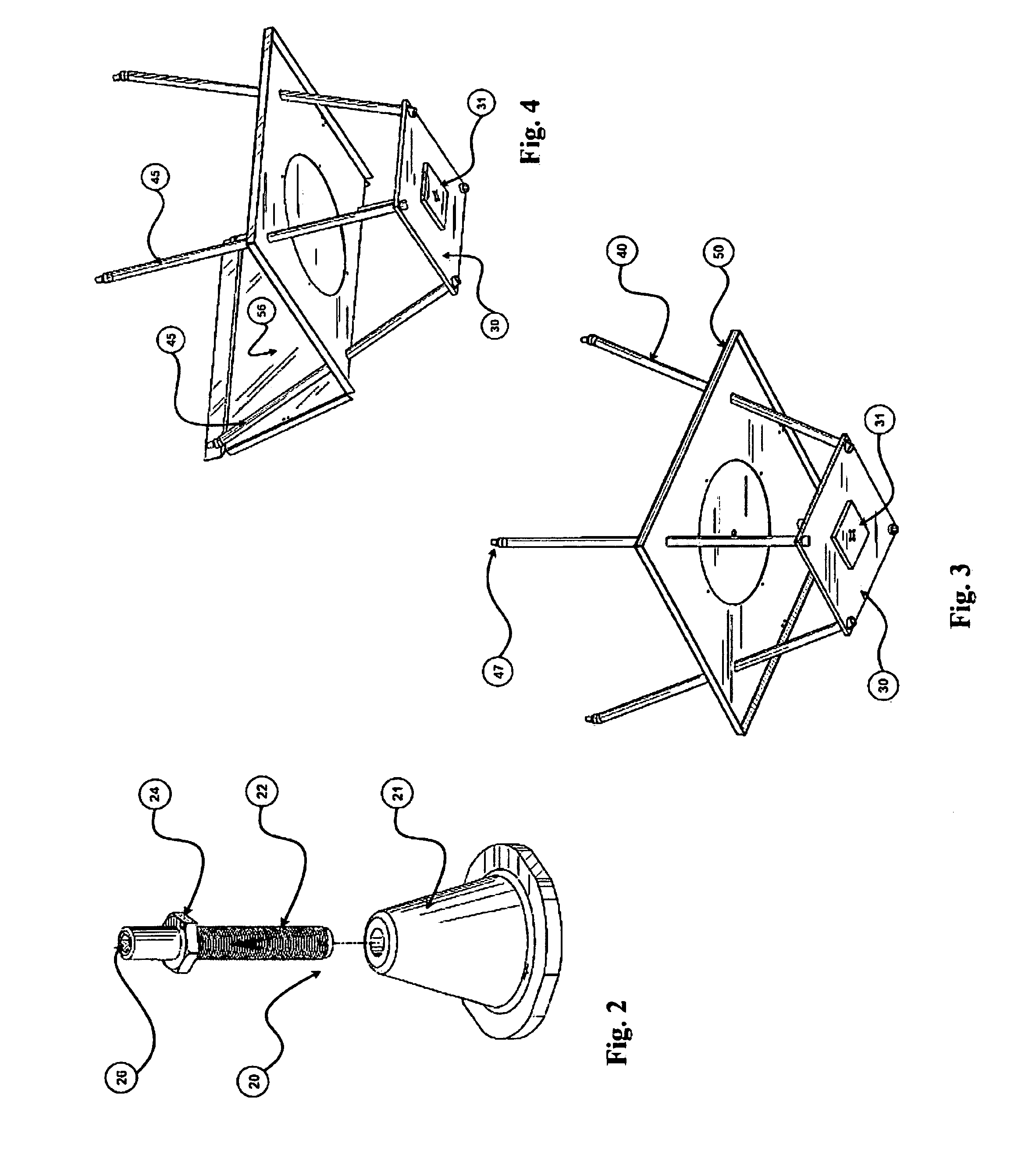Modular multilevel raised floor electro-mechanical distribution system
a distribution system and multi-level technology, applied in the field of modular multi-level raised floor electromechanical distribution system, can solve the problems of system wide failure, permanent data loss, extensive hardware damage, etc., and achieve the effect of saving energy, improving the effectiveness of conditioned air delivery, and facilitating cable and wire managemen
- Summary
- Abstract
- Description
- Claims
- Application Information
AI Technical Summary
Benefits of technology
Problems solved by technology
Method used
Image
Examples
Embodiment Construction
[0056]While it will be understood that the concept of the invention is applicable to a number of installations, and that constructional details of it may be varied, a description of the preferred form of the invention will be given wherein there are provided
[0057]Referring now to the drawings in greater detail, there is shown in FIG. 1 a portion of a two-level modular electro-mechanical distribution system embodying the invention, generally designated 10, installed on a building floor 11 in a closed room area 15 defined in part by the building floor and the vertically extending building walls 13. Base assemblies, of which only the bell-shaped foot member 21 is partially visible here, are positioned on the building floor 11 and receive and retain panel support assemblies which comprise strut plates 30 and panel support struts 40 which are retained on the strut plates and extend vertically upward at an oblique angle to the center of the strut plate 30 on which they are retained.
[0058]...
PUM
 Login to View More
Login to View More Abstract
Description
Claims
Application Information
 Login to View More
Login to View More - R&D
- Intellectual Property
- Life Sciences
- Materials
- Tech Scout
- Unparalleled Data Quality
- Higher Quality Content
- 60% Fewer Hallucinations
Browse by: Latest US Patents, China's latest patents, Technical Efficacy Thesaurus, Application Domain, Technology Topic, Popular Technical Reports.
© 2025 PatSnap. All rights reserved.Legal|Privacy policy|Modern Slavery Act Transparency Statement|Sitemap|About US| Contact US: help@patsnap.com



